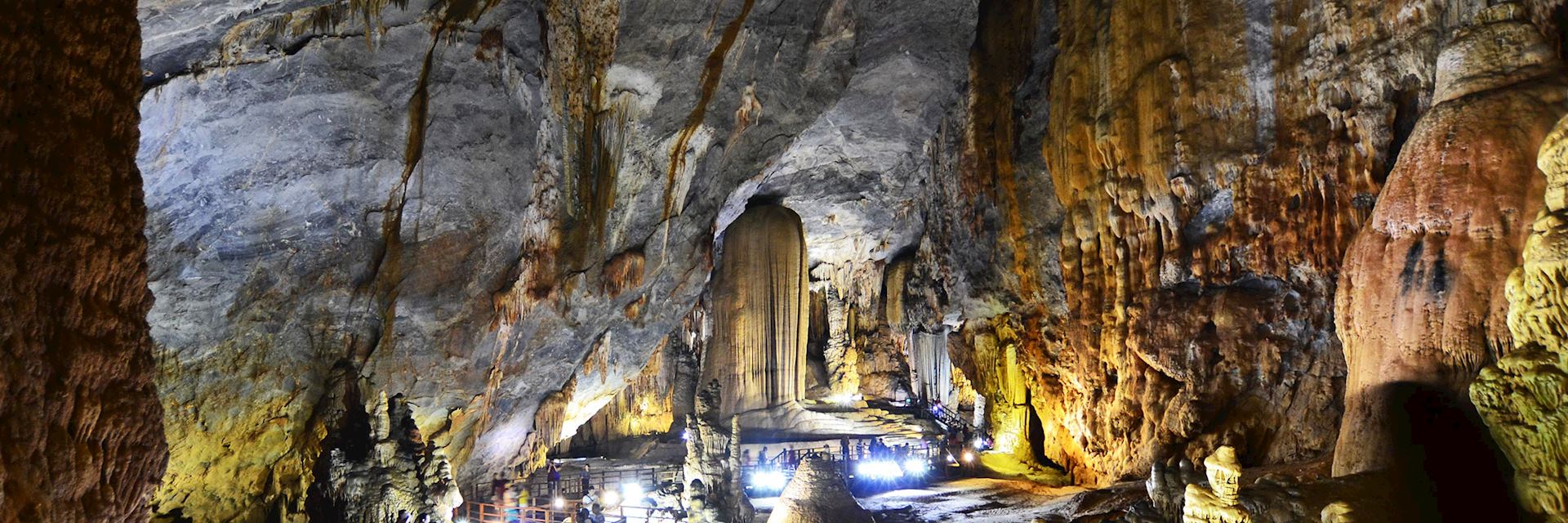We all remember stand-out moments from our childhood, whether it was coming face-to-face with wildlife we’d never seen before, the thrill of riding a train for the first time or that feeling of adrenaline and adventure when discovering something new.
You can relive those memories when on your travels. Below, our specialists share places and experiences that take you back to your formative years, from camping in untrammelled wilderness on a Tanzanian safari to zip-lining through Costa Rica’s cloud forests.
The ancient city of Petra, Jordan
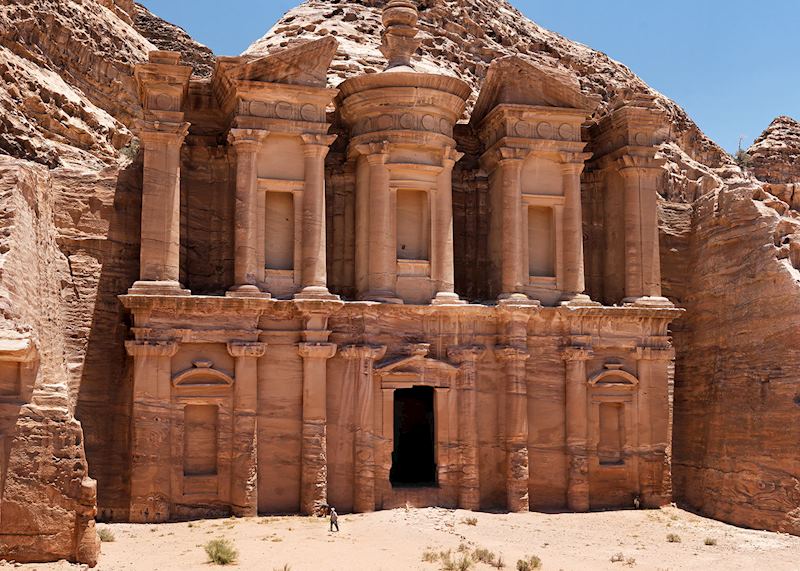
By Jordan specialist Emma
A mysterious city hidden deep in the desert. The haunting ruins of an ancient empire. The gritty crunch of sand and stone beneath your boots as you explore the vast, echoing wadi and imagine the people who once lived here….
A visit to Petra is arguably the closest you can get to living out the action-adventure pulp novels of the 1930s or their latter-day cinematic incarnations. In fact, this capital of the ancient Nabataean kingdom was featured in Indiana Jones and the Last Crusade.
However, the city’s popularity means the crowds can impinge on any illusions of being an intrepid explorer. That’s why I always suggest you visit Petra for at least two days. On your first, you can take the usual route through the city, entering through the long, narrow Siq in the morning and revelling in the sudden appearance of the Treasury, the city’s most-photographed building.
But, on your second day, I suggest you take the back route from Little Petra. Also known as Siq al-Barid, Little Petra is a smaller suburb of its namesake located north of the main site. You can leave from here for a hike through rugged mountains to reach the Monastery.
Sitting high on a plateau, the Monastery resembles the Treasury, but it’s much larger, soaring to a jaw-dropping 45 m (150 ft). It’s toward the end of the wadi, at the top of a fairly steep set of 800 steps, so most visitors don’t reach it until the late afternoon. Taking this back way in, not only will you avoid the stairs, you’ll be there early in the morning and have the site largely to yourself.
Bush walks and wilderness camping in Ruaha National Park, Tanzania
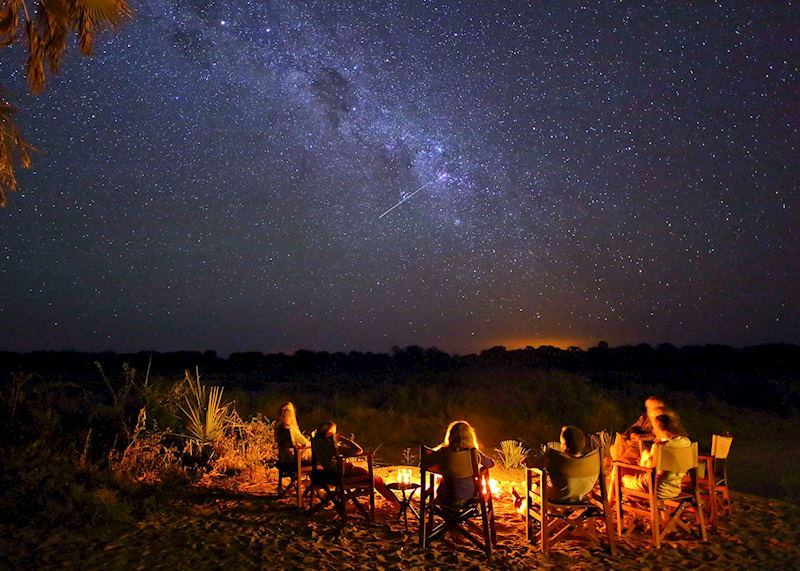
By Shannon from our Africa safari team
As we walked through the bush, Moli, my guide, held up his hand for quiet. We’d arrived at a herd of elephant, about 15 of them, ranging from huge adults to calves sheltering beneath their bellies.
They hadn’t seen us — Moli explained that elephant have very poor eyesight, so rely mostly on smell and sound. He’d used a sand-filled sock to determine the wind direction and positioned us so that we remained undetected, but close enough to feel the ground tremor with their movements.
Eventually, one of the adults noticed us and the herd trudged off, innately wary of humans (and rightly so). You never usually get so close to elephant on foot, but Moli’s many years of bush-walk experience ensured we were in safe hands.
Not only one of the best guides in Tanzania, Moli — along with his partner, Noelle — runs Kichaka Frontier Camp. With just three tents, it’s set in a remote area of Ruaha National Park (so remote, in fact, that it’s a four-hour game drive from the nearest airstrip, though you can easily tag it onto a wider Tanzania safari and beach stay).
As well as staying at Kichaka’s permanent frontier camp, you can embark on a more rustic multi-day fly-camping experience. By day, you walk, pausing to learn from Moli or one of the other guides about animal tracks, plant life, trees and even human evolution.
Your camp is set up in the middle of the bush — simple dome tents, often beside a riverbed where animals come to drink. Then, after a hearty meal cooked over the fire, it’s just you and the Milky Way.
Riding the toy train in Darjeeling, India

By India specialist Hannah
Pressing my nose against the window, I watch a thick column of steam pass by as the carriage slowly clatters out of the station. The pace doesn’t quicken, this is a journey purely for enjoyment.
So much so that half-way along the journey, from the former British-colonial hill station of Darjeeling to the nearby town of Ghoom, the train grinds to a halt. We’re not at a station — this is simply a platform built so that everyone can disembark and admire the train, the foothills of the Himalaya rising in the background.
The driver steps out of the cabin of this B-class steam locomotive, standing proudly to attention alongside it. Everyone clamours around, admiring the polished smokebox and chimney, while the driver encourages adults and children alike to stand beside him to pose for photos.
Back on board, the train slowly continues the 40-minute journey to Ghoom as residents and shop owners quickly cover washing and move tables of produce to let the train pass.
This route is part of India’s first mountain railway, a UNESCO World Heritage narrow-gauge track that, due to its small size, became affectionately known as a ‘toy train.’ It no longer runs its original 96-km (60-mile) route in its entirety, but this leisure trip runs daily, often cheered on by its own dedicated society of railway enthusiasts.
From Ghoom, you could ride the train straight back to Darjeeling or stop and explore the town’s tiny but artfully decorated monastery. Onward travel could take you further into West Bengal and Sikkim, and to the former capital of India, Calcutta.
Forest walks and rock pooling in northern Vancouver Island, Canada
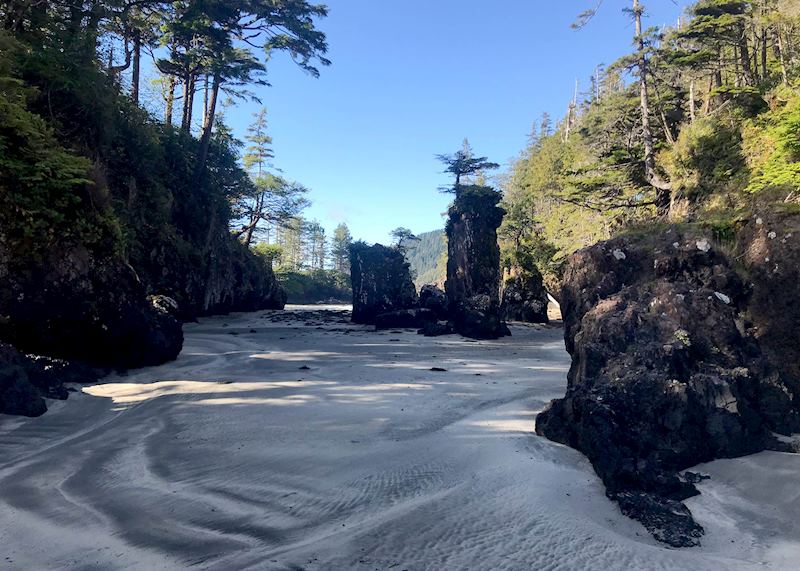
By Canada specialist Annie
Towering trees, huge swathes of empty sand, rock pools hiding creatures of the deep and caves carved out by swirling tides. San Josef Bay, on northern Vancouver Island’s west coast, is a throwback to days spent exploring beaches as a child.
I joined a small-group trip to this secluded part of the coast from Port Hardy, led by a local guide. You begin with an hour-and-a-half’s drive by minibus along an active logging track inaccessible to cars (your guide radios the truck drivers to ensure you can pass safely). Look out for black bears, black-tail deer and eagles along the way.
Then, you take a gentle hour-long walk through old-growth forest. I felt tiny compared to the trees surrounding me, which seemed to blanket us from all sounds except bird calls and the occasional snap of a twig. My guide, Chris, pointed out the forest’s natural features, from plants and mushrooms to insects, birds and animal tracks, as well as filling us in on the area’s history.
The forest eventually opens out onto a huge beach that wouldn’t look amiss in the south of France. The sand stretched out before me, completely empty and backed by forest. After a picnic of locally made sandwiches and cakes, you’re free to wander. I came across wolf tracks leading into a cave and saw a sea otter twirling in the waves.
Shallow rock pools collect a treasure trove of crabs, star fish, limpets and whelks. And, if your feet don’t mind the cold, you can paddle in the waves as they roll ashore.
After returning to Port Hardy, you can continue your trip with a stay at a bear-viewing lodge on British Columbia’s coast.
Zip-lining in Monteverde, Costa Rica
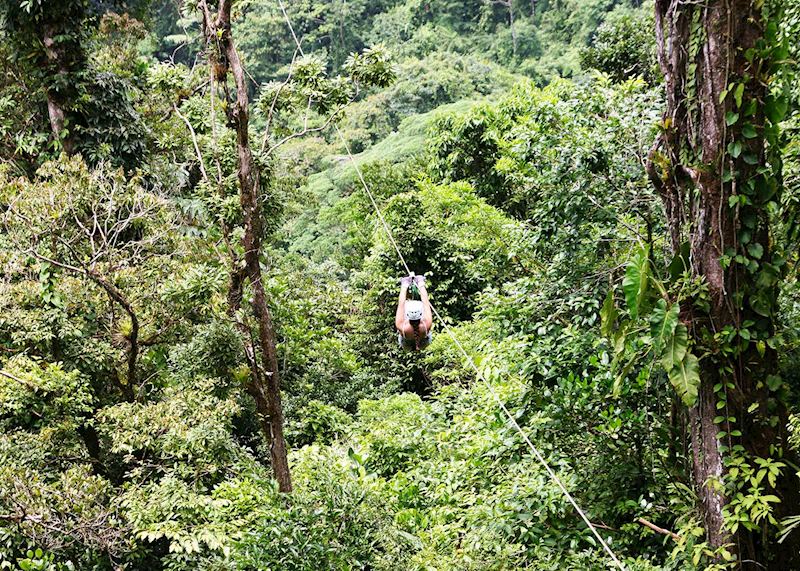
By Latin America specialist Michael
There’s something to be said about wandering beneath the boughs of Costa Rica’s cloud forests. But, I’d argue that it’s even more exciting to peer down at the treetops as you whiz through the higher canopies with views right across the tree line.
If you’re the intrepid type, zip-lining is a must, but even if you’re not, I encourage you to consider it. It’s not as extreme as it sounds and it’s a good option if you’re undertaking a family adventure across Costa Rica. I haven’t met anyone who regretted trying it.
There are a number of destinations to choose from, including Monteverde in central Costa Rica. Here, in Selvatura Park, you’ll traverse the cloud forest along 13 cables, gaining a vantage point once reserved for those who first climbed these trees. There’s the option to ride tandem alongside a family member, and children from the age of four are welcome.
Once you’ve finished zooming through the trees, you can take your time along a series of treetop walkways and suspension bridges. This gives you the chance to look out for some of the region’s birdlife, from iridescent hummingbirds to magenta-throated woodstars.
Caving in Phong Nha, Vietnam
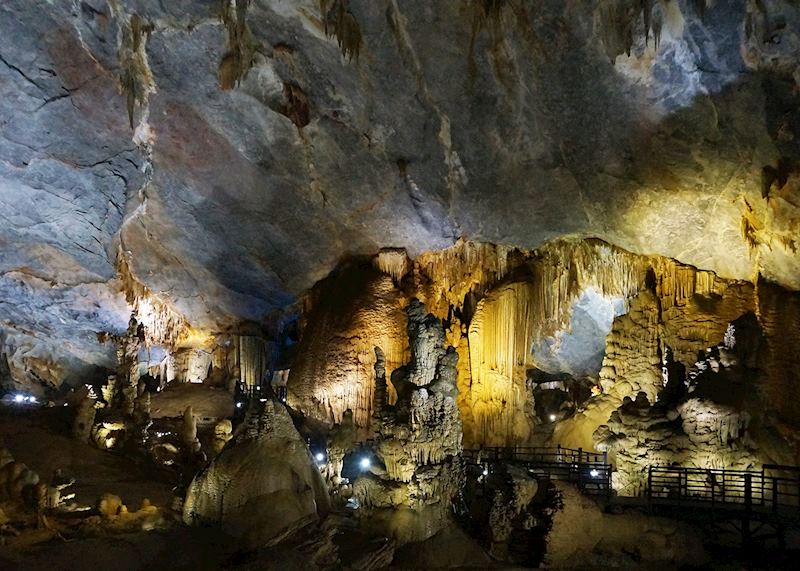
By Vietnam specialist Georgia
After a day’s hike wading knee-deep in rivers and over thick jungle roots, my small group and I donned our hard hats and entered a low, wide cavemouth. From here we clambered, single file, up a pile of boulders.
Few views have actually made me gasp out loud, but this is one of them. From our vantage point we were looking down into Hang En Cave, one of the largest in the world.
A shaft of light from an arch high above flooded the cavern below, highlighting a turquoise subterranean river and a sandy beach, dotted with a neat row of small, vibrant domes. These were our tented homes for the night.
Hang En is just one of a series of caves in Phong Nha-Ke Bang National Park in central Vietnam. Some, like Hang En and Son Doong (the largest discovered, capable of swallowing a New York city block) are multi-day treks for the intrepid. Spaces are limited, so you’ll need to book well in advance.
If you’d like something more accessible, there’s also a series of caves close to Phong Nha village which you can drive or cycle to. Paradise Cave lives up to its name and is the most impressive, its stalagmites, stalactites and helictites lit like a subterranean cathedral.
If you’re inspired to look into the adventurous side of Vietnam, you could combine this with mountain villages and waterfall treks on a two-week trip across Vietnam.
Chocolate making in Saint Lucia
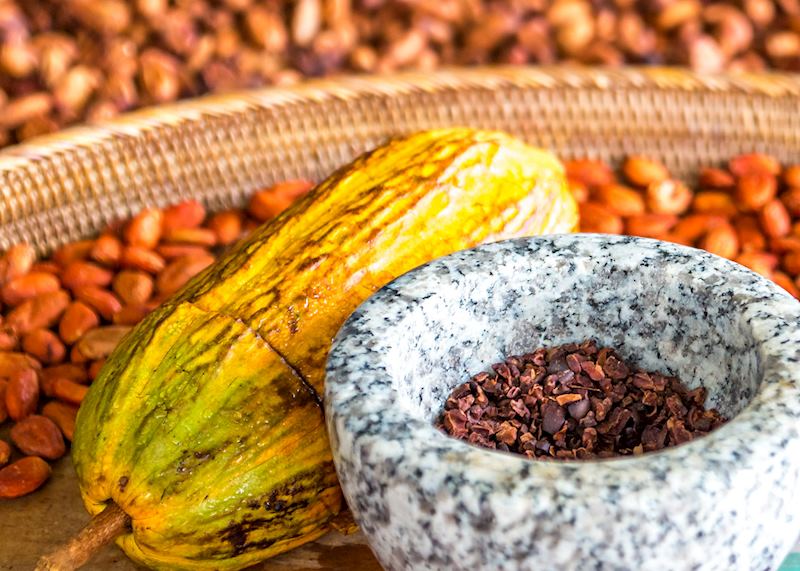
By Caribbean specialist Annabel
While chocolate is often associated with Aztec or Mayan cultures, cocoa has been an important part of Saint Lucia since the 18th century. Here, small-scale production thrives, and many communities make a living off ‘jungle M&Ms’ (the local nickname for cocoa beans).
I’ve always had a sweet tooth, with a particular penchant for chocolate. While eating it is a priority, there’s something exciting about getting more hands-on with one of my favourite foods. At the Rabot Estate, which spreads out beneath the island’s twin pitons, you can make your own chocolate bar.
After a tour of the plantation (which grows cocoa for Hotel Chocolat), you’re led to an alfresco kitchen where the raw materials are laid out ready. From grinding the beans into a pulp to adding the cocoa butter, it’s a physical process, which you’ll perform by hand with a pestle and mortar.
Once the mixture is ready, you’ll pour it into a mould. If you’re as impatient as I am, I suggest staying for lunch at the on-site restaurant — every dish contains an element of cocoa — after which your bar should be cooled and ready to eat.
If that’s not enough of the sweet stuff, you can combine a stay by Saint Lucia’s coast with a few nights up in the Pitons. Fond Doux Plantation and Resort is a 250-year-old working cocoa plantation a short walk from the Rabot Estate. Here you can stay in a restored French-colonial cottage surrounded by cocoa trees.
Was this useful?


